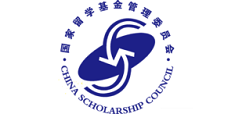Characterization of biochemical and nutritional properties of protein hydrolysates of raw material from the slaughter industry
The aim of the project is to optimize the taste and nutritional value of protein hydrolysates generated from different types of raw materials from the slaughter industry
The meat industry produces large amounts of raw materials containing protein. Most of these products exhibit a great content of high quality proteins and many of them consist of muscle (e.g. heart, diaphragm, trimmings and blood). While the nutritional quality of their proteins is identical to meat, their economic value in the trade is rather low, so that they constitute an inexpensive source of high quality proteins that can be further processed into different types of high protein products; in turn, this increases the value of the whole production chain and reduces its environmental impact through a reduction in waste.
Pure proteins after industrial processing of side streams show some issues for their direct inclusion as an ingredient (like proper separation, solubility, flavor, etc). Enzymatic hydrolysis is an efficient process to extract proteins from side streams, and combined with further separation appear as a promising approach to develop protein products fulfilling nutritional and technological demands. It is well known that hydrolyzed proteins are better absorbed than intact protein in the intestine resulting in an increase in muscle protein synthesis. Most of the studies within this area have been focusing on protein hydrolysates from milk or plant protein and less have been looking on meat hydrolysates.
Characterization of protein hydrolysates is very challenging as there is typically a large variation in the peptide length ranging from 2-100 amino acids having a broad physical and chemical properties (e.g. charge state and hydrophobicity), and special methods for separation and informatics analysis are needed. However, there have been major developments of the mass spectrometry instruments and the bioinformatics tools in the recent years making it possible to analyze very complex peptide mixtures.
Protein hydrolysates can aggregate into high-molecular substances and/or less soluble substances, which are usually called plastein. Its formation mainly includes two stages: hydrolysis of raw protein and synthesis of plastein in the presence of proteases under optimum conditions. Reports show that the plastein can be used to improve nutritional value of food proteins and to reduce the bitterness of protein hydrolysates, although these applications are not yet to be commonly utilized in the food industry. It is interesting to aggregate meat hydrolysates into plastein and also worthwhile to investigate its functional and nutritional properties to enhance the value of meat by-products.
René Lametsch
Associate Professor
Ingredient and Dairy Technology
Qian Li
PhD Student
Ingredient and Dairy Technology
Jeanette Otte
Associate Professor
Ingredient and Dairy Technology
Funded by:

Project: Characterization of biochemical and nutritional properties of protein hydrolysates of raw material from the slaughter industry
Period: 1st of October 2017 - 30th of September 2021
Grant donor: China Scholarship Council
Contact
 René Lametsch
René Lametsch
Associate Professor
Ingredient and Dairy Technology
